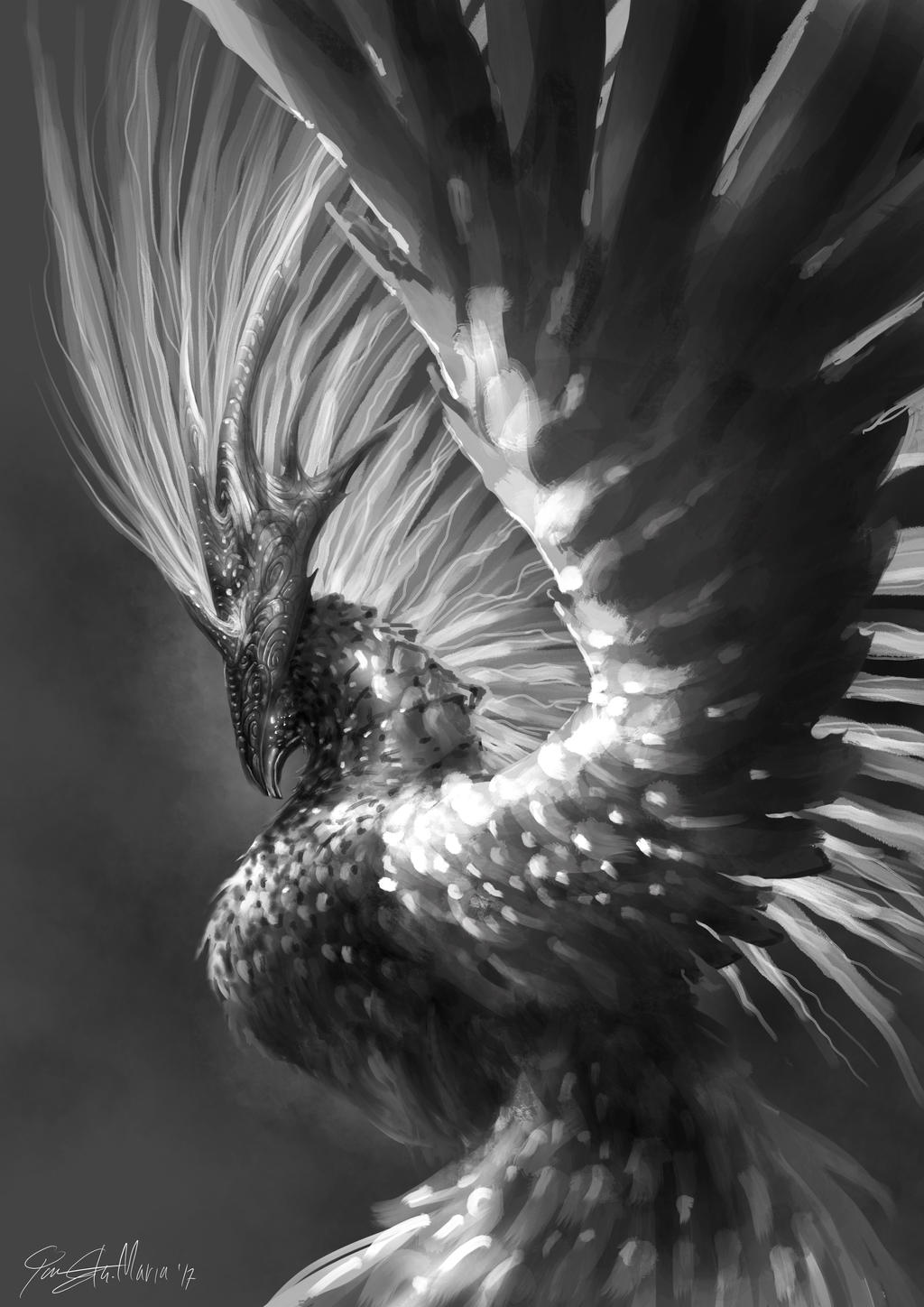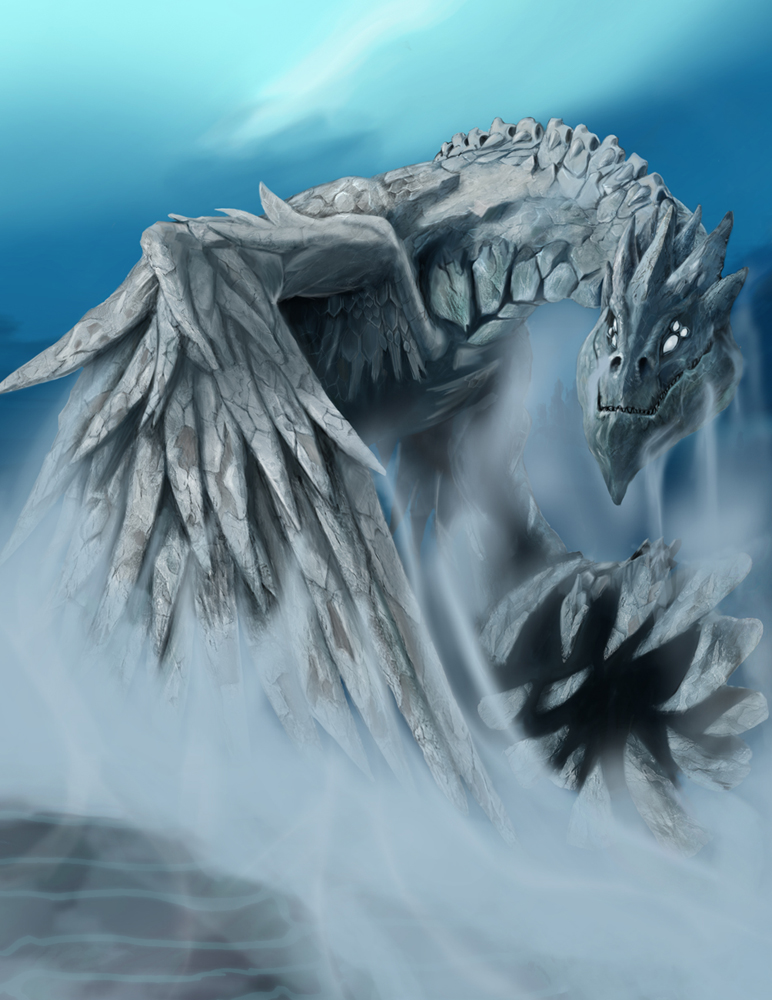Minokawa is a giant, dragon-like bird in Philippine legends, particularly the Bagobo ethnic groups of Mindanao. Early people believed this creature is so big that it can swallow (or cover) the sun to explain the occurrence of eclipses. It is even described as a giant bird named Minokawa that lives beyond the sky which can devour the sun and the moon, and would try to do the same with the earth.
From what I can gather, all of the references (aside from the indigenous origins) to Minokawa trace back to the tale recorded by Laura Watson Benedict, the first anthropologist to travel to the Philippines in 1906 to study the Bagobo people. The ‘story of the eclipse’ that she documented carries enough detail on the appearance of minokawa to inspire any artist!
“The following stories were obtained from the Bagobo people, one of the groups of pagan Malays in southeastern Mindanao, Philippine Islands. Their habitat is on the eastern folds of the Cabadangan mountain-range, in the vicinity of Mount Apo, the highest peak, and on the foothills thence sloping down to the west coast of the Gulf of Davao. They practise a primitive agriculture–raising corn, rice, camotes, and several vegetables–in fields and little gardens at the edge of the forests. Their garments are of home-grown hemp; and their artistic interests centre largely around the decorative designs produced in dyeing, weaving, and embroidery.” -Laura Watson Benedict (1906)

Story of the Eclipse
Before time began, very long ago, a great bird called “minokawa” swallowed the moon. Seized with fear, all the people began to scream and make a great noise. Then the bird peeped down to see what was the matter, and he opened his mouth. But as soon as he opened his mouth, the moon sprang out and ran away.
The minokawa-bird is as large as the Island of Negros or Bohol. He has a beak of steel, and his claws too are of steel. His eyes are mirrors, and each single feather is a sharp sword. He lives outside the sky, at the eastern horizon, ready to seize the moon when she reaches there from her journey under the earth.
The moon makes eight holes in the eastern horizon to come out of, and eight holes in the western horizon to go into, because every day the big bird tries to catch her, and she is afraid. The exact moment he tries to swallow her is just when she is about to come in through one of the holes in the east to shine on us again. If the minokawa should swallow the moon, and swallow the sun too, he would then come down to earth and gulp down men also. But when the moon is in the belly of the big bird, and the sky is dark, then all the Bagobo scream and cry, and beat agongs, [*] because they fear they will all “get dead.” Soon this racket makes the minokawa-bird look down and “open his mouth to hear the sound.” Then the moon jumps out of the bird’s mouth and runs away.
All the old men know about the minokawa-bird in the ulit stories.
[*] Large percussion instruments made by the Chinese, imported from
Singapore into Mindanao, and widely used by the wild tribes.

ALSO READ: BAKUNAWA: The Moon Eating Dragon of Philippine Mythology
Jordan Clark is a Canadian born descendant of Scottish immigrants living on the homelands of the Lekwungen speaking peoples. His interest in Philippine myth and folklore began in 2004. Finding it difficult to track down resources on the topic, he founded The Aswang Project in 2006. Shortly after, he embarked on a 5 year journey, along with producing partner Cheryl Anne del Rosario, to make the 2011 feature length documentary THE ASWANG PHENOMENON – an exploration of the aswang myth and its effects on Philippine society. In 2015 he directed “The Creatures of Philippine Mythology” web-series, which features 3 folkloric beings from the Philippines – the TIKBALANG, KAPRE and BAKUNAWA. Episodes are available to watch on YouTube. Jordan recently oversaw the editing for the English language release of Ferdinand Blumentritt’s DICCIONARIO MITOLÓGICO DE FILIPINAS (Dictionary of Philippine Mythology) and is working on two more releases with fellow creators scheduled for release later this year. When his nose isn’t in a book, he spends time with his amazing Filipina wife of 20 years and their smart and wonderful teenaged daughter.


